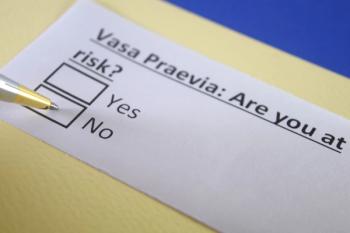
Ciera Kirkpatrick, PhD, shows how TikTok is transforming cervical cancer awareness
Health care providers are using short-form videos on TikTok to educate young women about Pap tests, breaking down barriers with engaging, accessible content.
In a recent interview with Contemporary OB/GYN, Ciera Kirkpatrick, PhD, assistant professor at the University of Nebraska–Lincoln, discussed the growing use of short-form video platforms such as TikTok by health care providers to share vital health information, particularly regarding cervical cancer screening and Pap tests.
She explained that many young women now turn to TikTok not just for entertainment, but also to find answers to health-related questions. Recognizing this shift, health care professionals have started using the platform to engage this demographic by sharing concise, informal, and visually engaging content on preventive health measures.
Kirkpatrick emphasized that short videos allow providers to demonstrate what a Pap test involves, including showing medical tools such as the speculum. When these visual demonstrations are paired with clear explanations about the purpose and importance of the Pap test, they become a highly effective method of educating young women and encouraging them to undergo screening. This approach demystifies the procedure and helps reduce anxiety, provided the focus remains informative rather than fear-inducing.
However, she noted that including discussions of potential pain or discomfort—especially when accompanied by visuals of the speculum—can sometimes backfire. These elements may overwhelm viewers, triggering defensive reactions and diminishing their intent to seek screening. Instead, Kirkpatrick recommended focusing on clear, empathetic explanations and normalizing the experience without emphasizing pain.
One of the key advantages of using TikTok and similar platforms is accessibility. Short-form videos deliver information quickly and at little to no cost, which is particularly valuable for individuals without insurance or easy access to health care. Moreover, many young women are simply unaware that they need Pap tests, and seeing relevant content in their daily social media feed can help raise awareness and spark action.
To further promote Pap test screening, Kirkpatrick suggested that clinicians not only provide information online but also create spaces—both virtual and clinical—where patients feel safe asking questions. Social media offers a unique opportunity to address sensitive or stigmatized topics anonymously, helping users access information without embarrassment. By anticipating common questions and offering clear, approachable content, health care providers can empower patients with the knowledge and motivation needed to prioritize cervical cancer screening.
No relevant disclosures.
Reference
Kirkpatrick CK, Lawrie LL. “This is what a speculum looks like!” Effects of medical instrument demonstration and message framing in pap test videos on social media. Health Communication. 2025. doi:10.1080/10410236.2025.2511733
Newsletter
Get the latest clinical updates, case studies, and expert commentary in obstetric and gynecologic care. Sign up now to stay informed.









